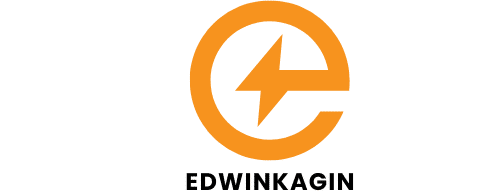In the world of competitive rowing, the difference between winning and losing often comes down to a few seconds. To better understand the factors that influence rowing performance, many coaches and athletes are turning to data analysis tools. By studying data collected during training and races, they can better understand their strengths and weaknesses, and adjust their strategies accordingly. In this article, we will explore how to use analytical tools to improve your race strategies in competitive rowing.
The Role of Pacing and Time in Rowing
Pacing and time play a critical role in the outcome of any rowing race. A rower must maintain a steady rhythm throughout the race to maximize their performance.
Also read : What Are the Latest Advancements in Snowboard Design for Competitive Halfpipe Riders?
In the context of rowing, pacing refers to the rate at which you row, typically measured in strokes per minute. Good pacing is essential for maintaining a high level of performance throughout a race. If you row too fast at the start, you risk running out of energy before the finish line. If you row too slowly, you won’t be competitive.
Time, on the other hand, is the total duration it takes to complete the race. In rowing, time is influenced by factors such as stroke rate, stroke power, and boat speed. By analyzing pacing and time data, you can gain insights into your performance and make strategic decisions to improve.
Also to discover : How Can Drone Technology be Used for Coaching Tactical Plays in Rugby?
Rowing Data Analysis with Google Drive
Google Drive offers a range of powerful tools for analyzing rowing data. With Google Sheets, you can easily input and organize your data, and then perform a variety of analyses. Google’s built-in functions and add-ons like Google Analytics can help you visualize your data, identify trends, and make informed decisions about your race strategy.
For example, you might input data from your rowing ergometer into Google Sheets. This could include information like stroke rate, boat speed, and time. By analyzing this data, you could identify patterns or trends, such as a decrease in boat speed towards the end of a race. This insight could then be used to adjust your pacing strategy, aiming to maintain a higher speed throughout the race.
Strategies for Improving Rowing Performance
There are several strategies that you can employ to improve your rowing performance based on the analysis of your rowing data.
One important strategy is to optimize your stroke rate. The stroke rate is the number of strokes you take per minute, and it has a direct impact on your boat speed. By analyzing your stroke rate data, you can identify the optimal stroke rate that allows you to maximize your speed without exhausting yourself before the end of the race.
Another strategy is to improve your pacing. By analyzing your pacing data, you can identify any inconsistencies in your pacing and work to correct them. Maintaining a consistent pace throughout the race can help you conserve energy and finish strong.
The Role of Sports Science in Rowing Performance
Sports science plays an increasing role in the training and performance of athletes across all sports, and rowing is no exception. By applying scientific principles and methods, athletes and coaches can gain a better understanding of the physiological and biomechanical factors that influence performance.
One of the most important aspects of sports science in rowing is the analysis of physiological data. This can include heart rate, oxygen consumption, and blood lactate levels. For example, by monitoring blood lactate levels during training, coaches can gain insight into an athlete’s anaerobic threshold – the point at which the body starts to produce lactate faster than it can be removed, leading to fatigue.
Another important aspect of sports science in rowing is biomechanical analysis. This involves the study of rowing technique, including the movement and positioning of the body, the application of force, and the efficiency of the stroke. By analyzing biomechanical data, coaches can identify areas for improvement and develop targeted training programs to enhance performance.
By incorporating these scientific analyses into your training and race strategy, you can gain a competitive edge and optimize your performance in rowing. It’s an analytical approach that opens a whole new world of possibilities for those who are serious about their sport.
Enhancing Rowing Performance through Power Output & Oxygen Uptake Analysis
Analyzing power output and oxygen uptake is another effective method to improve rowing performance. Power output refers to the amount of work done per unit of time, while oxygen uptake speaks to an athlete’s capacity to use oxygen during intense exercise. Both are crucial factors in understanding the efficiency of a rower.
By using a rowing ergometer, coaches can collect detailed data on power output for each stroke. This data can be input into Google Sheets, which then allows for in-depth analysis. When a rower’s power output decreases, it’s a clear indicator that they are becoming fatigued. With this information, coaches can adjust the athlete’s training regimen to improve their stamina and maintain higher power output for longer periods.
In terms of oxygen uptake, understanding the VO2 max, or the maximum amount of oxygen that an athlete can utilize during intense exercise, is absolutely important. This consists of measuring oxygen consumption during a graded exercise test on a rowing ergometer. The higher the VO2 max, the more oxygen an athlete can use, which directly ties into their endurance capacity. Using tools like Google Scholar to access studies on VO2 max can help inform training programs designed to improve oxygen uptake.
Knee Extension Importance in Rowing Stroke
When it comes to the rowing stroke, the role of the knee extension is often underestimated. However, research has shown that the knee extension is a key determinant of rowing performance. During the drive phase of the rowing stroke, the legs should do the majority of the work, extending to provide the power needed to propel the boat forward.
Google Scholar is a valuable tool for accessing research on the biomechanics of rowing. This can open a window into the science behind the optimal rowing stroke, including the importance of knee extension. Improved understanding of these principles will allow athletes and coaches to refine their technique for maximal efficiency.
By using video analysis tools, coaches can examine the knee extension during each phase of the rowing stroke. This can help identify any issues or inefficiencies, such as incomplete extension or premature bending. Once these areas are identified, targeted exercises can be used to improve overall technique.
Conclusion: The Power of Analytical Tools in Competitive Rowing
In conclusion, the use of analytical tools in competitive rowing is transforming how athletes train and perform. By analyzing data from various sources, including rowing ergometers and Google applications, rowers can gain valuable insights into their performance. This data-driven approach allows for a deeper understanding of factors such as pacing, stroke rate, power output, oxygen uptake, and stroke technique, including knee extension.
Using these tools, rowers can optimize their pacing strategy, identify the optimal stroke rate, and improve their physical efficiency. Moreover, the integration of sports science into their training regimens provides them with a comprehensive understanding of their capabilities, strengths, and areas for improvement.
As a result, rowers can develop extremely nuanced and effective race strategies that are individually tailored to their unique physiological and biomechanical profiles. This not only improves their performance but also gives them a competitive edge in a sport where every second counts. The era of data analysis in rowing has clearly arrived, and those who embrace it are reaping the rewards.











